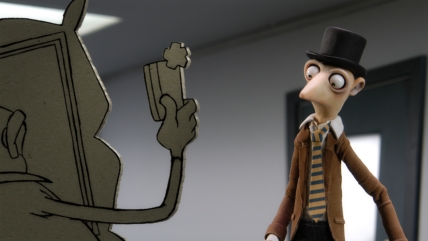And the token nominee is…
Nothing is ever so counterproductive as a desperate gamble for popular relevance. Case in point: the Academy of Motion Picture Arts and Sciences is expanding the Oscars’ Best Picture shortlist to ten nominees, effectively reverting to the pre-1944 format. The press release is here. This is a boneheaded idea, although I can see why somebody would think it looks good on paper.
In recent years, the best thing AMPAS did for itself was move the Oscars forward by a month. By curtailing the ability of the major studios to do a heavily funded marketing push in Variety and The Hollywood Reporter to conquer the industry’s mindspace with their chosen representative, and moving the ballot deadline ahead of the precursor awards that once rendered the Oscars too predictable, the show virtually matured overnight.
Since then, the trend has been towards greater recognition of artier, if not outright independent fare. A decade ago, it would have been unlikely, if not unthinkable, for excellent and unique films like No Country For Old Men and Slumdog Millionaire to claim the top prize. This is not to say that the Oscars used to be bad and suddenly became good: it is merely to acknowledge that the awards were increasingly living up to their social responsibility as a counterweight for the market, as a way of boosting the fortunes of films the public may have wrongfully overlooked. The public may have complained that they had never heard of the films being awarded, let alone seen them—often because the lesser-known nominees had yet to see general release outside of the major American cities by the time the shortlist was announced—but that is as it should be. If an awards show comes off as elitist, it is doing its job.
Personally, the only question I care about is whether this means Up will be Pixar’s first Best Picture nominee, and the second animated feature to make the shortlist in history (Beauty and the Beast being the first). But without an even playing field comparable to that of previous years, it is impossible to tell whether this is actually a sign of forward progress. And against the objections of those who believe the Animated Feature category has created a permanent ghetto for the artform, I do believe some progress has been made. Yes, only very recently did we see the outrageous exclusions of Finding Nemo and Ratatouille, two of the finest pieces of American cinema in the twenty-first century. But the nomination of WALL•E in the Original Screenplay category last year was already a significant step forward, a recognition of what story really means in a visual medium.
The sudden expansion of the shortlist to twice its previous size is a nightmare for historians and other cineastes whose interest is in tracking the evolution of Hollywood’s congratulatory attitude towards itself. And unlike similar lists that whittle the present vintage down to ten—the American Film Institute’s comes to mind—the selection of a victorious picture as the best of the ten guarantees even more pervasive vote-splitting than what we have seen in the past.
(My opinion has always been that significant industry awards should be determined by discussion and debate rather than democracy, but the Oscars are the film industry’s way of patting itself on the back and I wouldn’t expect it to conduct itself any differently. It is a real shame that the Oscars, and not the critics’ awards or the AFI, serve as the primary guidebook for future generations to select films for preservation or rediscovery. One day, this may change.)
In my estimation, this is an unwanted and unnecessary concession to populist sentiment that The Dark Knight—a sterling if overrated crime drama, and the superhero genre’s most earnest bid for serious acceptance—was wrongfully snubbed. It is an intentional return to the pattern of including token box-office hits (remember The Fugitive?), under the appealing guise of easing the inclusion of films that have already been given uncomfortable pigeonholes to keep them out of everybody else’s business—animated and foreign-language features in particular.
If we do see increased recognition of animated, foreign, and independent films—not just this year, but going forward in the long term—I will temper my objections and stand corrected. It is far more likely that the big-studio horses will crowd the race.




